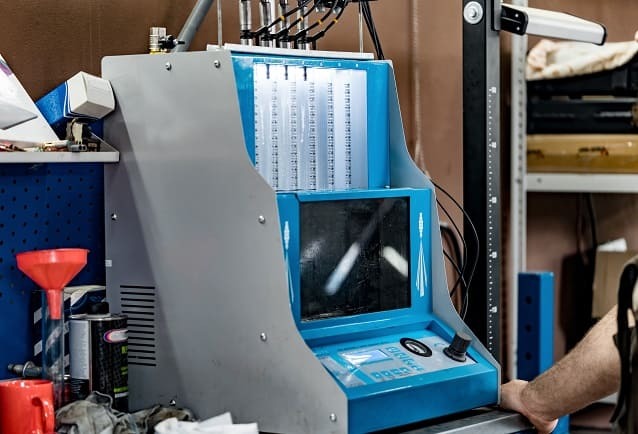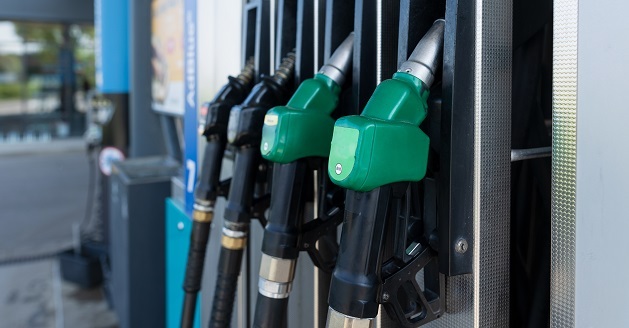
 Data Structure
Data Structure Networking
Networking RDBMS
RDBMS Operating System
Operating System Java
Java MS Excel
MS Excel iOS
iOS HTML
HTML CSS
CSS Android
Android Python
Python C Programming
C Programming C++
C++ C#
C# MongoDB
MongoDB MySQL
MySQL Javascript
Javascript PHP
PHP
- Selected Reading
- UPSC IAS Exams Notes
- Developer's Best Practices
- Questions and Answers
- Effective Resume Writing
- HR Interview Questions
- Computer Glossary
- Who is Who
What is the full form of DFI?
Introduction
Digital Fuel Injection (DFI) system is programmed to precisely enrich the cold-start mixture so that the portion of the fuel that can vaporise at low temperatures is present in enough quantity to create an ignitable mixture (this so-called "front end" of the fuel is primarily a small volatile species called isopentane).

The EPA wants the exhaust catalyst to be near to the engine and ready to "light off" as quickly as possible since the remaining gasoline travels through the engine unburned. Adoption of Gasoline Direct Injection (GDI) in favour of traditional port injection is another stage. Atomized fuel is immediately injected into the combustion chambers using GDI.
System functions
The parts that follow provide an explanation of a fuel injection system's basic operations. A single component serves numerous purposes in certain systems
Pressurising fuel
Pressurised fuel was sprayed into the engine during fuel injection. Consequently, a fuel pressurisation device (such a gasoline pump) is required.
Metering of fuel
The comparatively advanced helix-controlled injection pump(s) utilised in a number of early mechanical injection systems produced injection pressure and metered gasoline at the same time. Fuel metering has been managed by electronic devices ever since the 1980s. In more contemporary systems, the ignition timing, fuel metering, and other engine operations are all controlled by an electronic engine control unit.
Injecting of fuel
The fuel injector serves as the engine's last stage of fuel distribution and resembles a spray nozzle in operation. The combustion chamber, inlet manifold, or - less frequently - the throttle body are where the injector is placed.
"Injection valves" are fuel injectors that also regulate metering, while "unit injectors" are injectors that carry out all three of these tasks.
Direct injection systems
Direct injection refers to the process of injecting gasoline directly into each cylinder's primary combustion chamber.[3] Only inside the combustion chamber do air and fuel combine. As a result, during the intake stroke, the engine just draws in air. Whether sequential or cylinder-by-cylinder, the injection strategy is always intermittent.
Direct injection petrol engine
Fuel is delivered directly into the combustion chamber in petrol direct injection (GDI), also known as petrol direct injection (PDI), which is a mixture formation mechanism for internal combustion engines that run on petrol (petrol).

Unlike manifold injection systems, which fuel into the intake manifold (inlet manifold), this does not. Utilising GDI may improve engine performance and specific power output while lowering exhaust pollutants.
Common-rail injection systems
In contrast to low-pressure fuel pump feeding unit injectors (or pump nozzles), common rail direct fuel injection use high-pressure (over 2,000 bar or 200 MPa or 29,000 psi) fuel rail feeding solenoid valves.
By injecting gasoline as a larger number of tiny droplets, delivering a significantly higher ratio of surface area to volume, high-pressure injection outperforms previous lower pressure fuel injection in terms of power and fuel economy. Improved fuel droplet surface vaporisation results in more effective ambient oxygen mixing with vaporised fuel, which results in a more thorough burning.
Conclusion
The digital fuel injection system was made to maximise fuel efficiency while minimising the amount of harmful emissions from the exhaust pipe. Carbon buildup in mechanical components like the fuel system, injectors, or intake valves is prevented by this device.
FAQs
Q.1.What is Digital Fuel Injection?
Ans: A computerised Fuel Injection system is made up of several electronics and sensors. Fuel is extracted from the tank in carbureted systems.
Q.2. Which is superior: an electronic carburetor or fuel injection? So, which is superior?
Ans: When it comes to performance, fuel efficiency, and throttle responsiveness, fuel injection has the upper hand. While the FI system may cost you more in the long run, it will outperform a carburetor.
Q.3. What are the types of System functions?
Ans: The three categories of system functions are as follows
Pressurizing fuel
Fuel metering
Fuel injection

